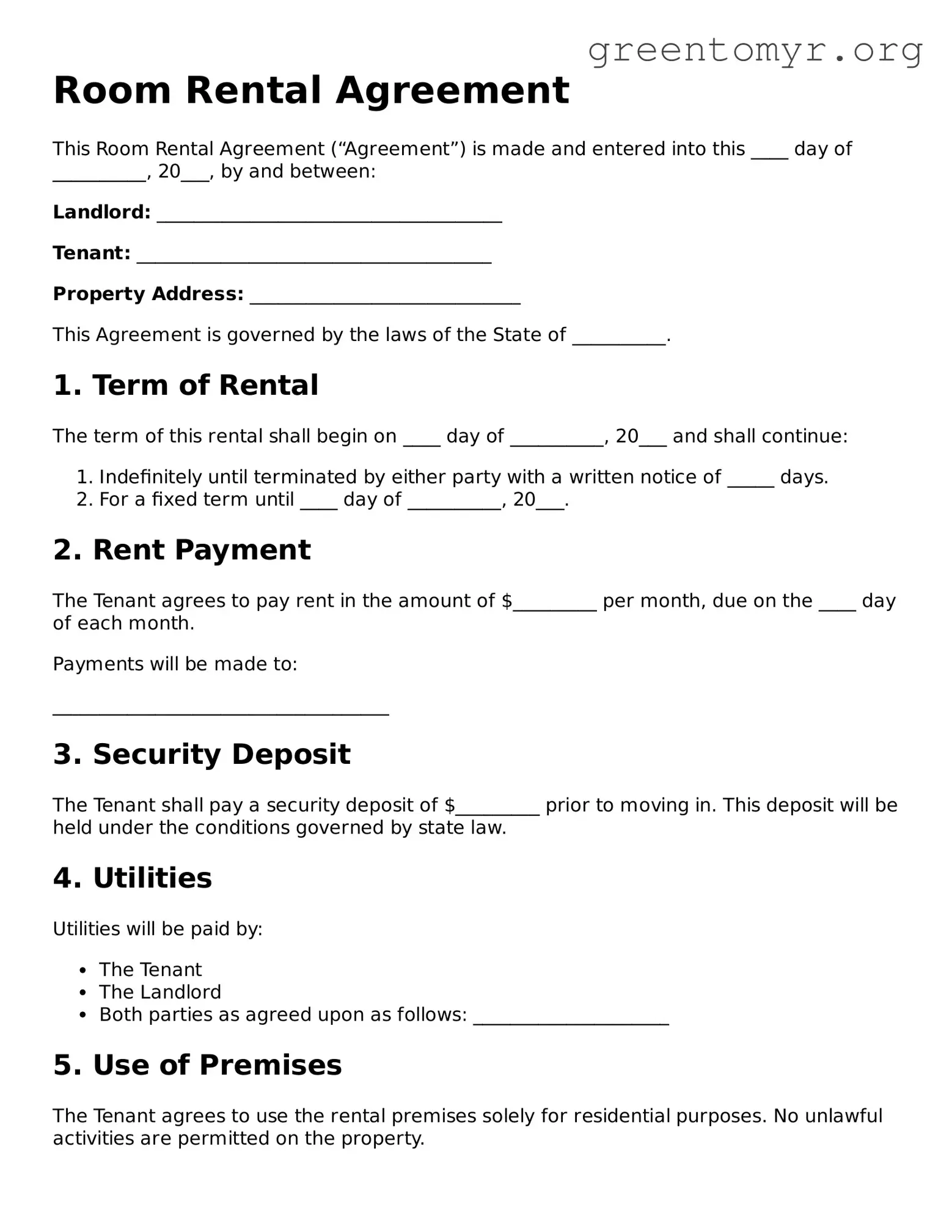Room Rental Agreement
This Room Rental Agreement (“Agreement”) is made and entered into this ____ day of __________, 20___, by and between:
Landlord: _____________________________________
Tenant: ______________________________________
Property Address: _____________________________
This Agreement is governed by the laws of the State of __________.
1. Term of Rental
The term of this rental shall begin on ____ day of __________, 20___ and shall continue:
- Indefinitely until terminated by either party with a written notice of _____ days.
- For a fixed term until ____ day of __________, 20___.
2. Rent Payment
The Tenant agrees to pay rent in the amount of $_________ per month, due on the ____ day of each month.
Payments will be made to:
____________________________________
3. Security Deposit
The Tenant shall pay a security deposit of $_________ prior to moving in. This deposit will be held under the conditions governed by state law.
4. Utilities
Utilities will be paid by:
- The Tenant
- The Landlord
- Both parties as agreed upon as follows: _____________________
5. Use of Premises
The Tenant agrees to use the rental premises solely for residential purposes. No unlawful activities are permitted on the property.
6. Termination
Termination of this agreement requires written notice. The notice period will be _____ days from the desired termination date.
7. Signatures
Both parties acknowledge and agree to the terms of this Rental Agreement.
Landlord Signature: ___________________________ Date: ______________
Tenant Signature: ___________________________ Date: ______________
